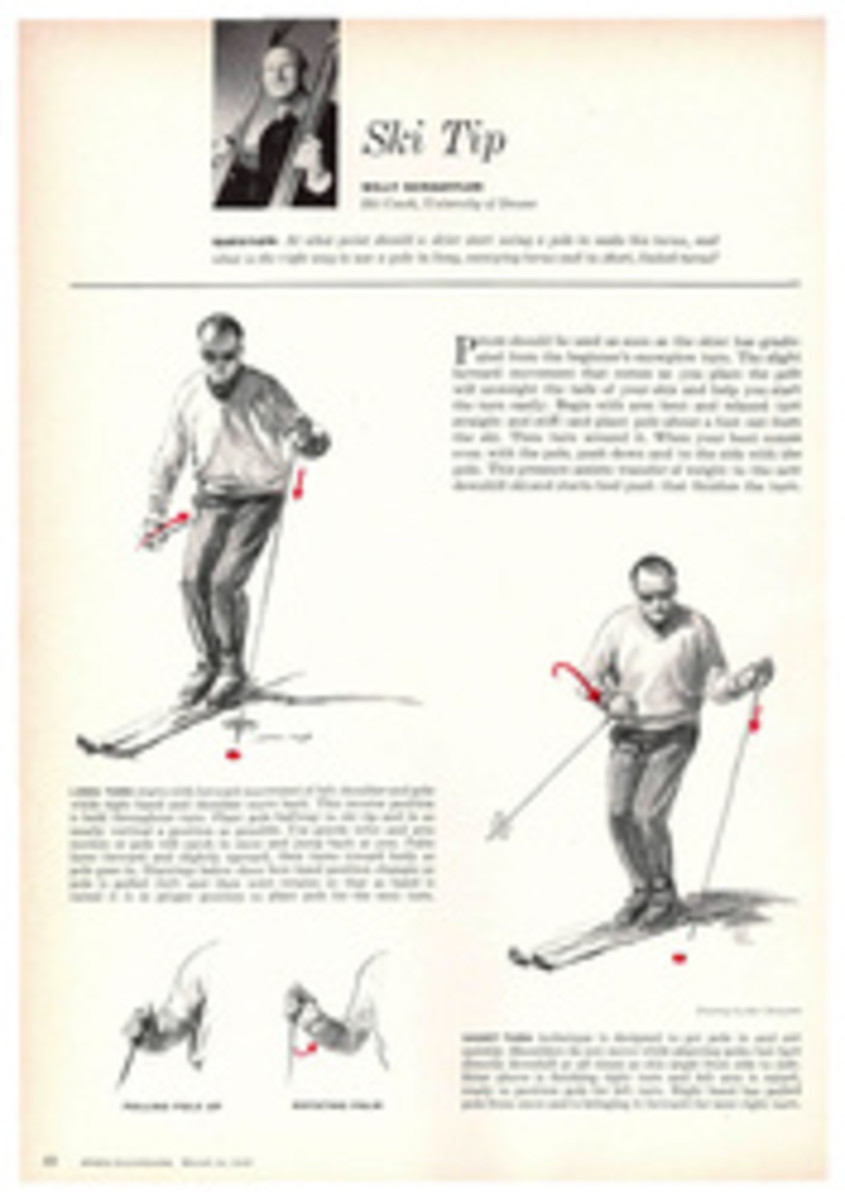
How to make a perfect omelet
Because a lot of people don't seem to know how to beat an egg, I decided to write a book on omelets," said Narcissa Chamberlain. We were sitting, on a winter's day in Marblehead, Mass., before one of the six fireplaces that issue into a central chimney in the enchanting 17th century house which is called home by the much-traveled Chamberlains. The walls of every room, or so it seemed, were lined right up to the low ceilings with books—innumerable books, many of them cookbooks, ancient and modern. For the writings of erudite, gifted Samuel Chamberlain combine history and travel with lore about food and restaurants in many countries of the world.
His wife Narcissa and daughter Narcisse make their contribution in the kitchen, testing his discoveries and adapting exotic recipes for American use. The mother-daughter team also is responsible for the charming Chamberlain Calendar of French Cooking, published every year by Hastings House. But The Omelette Book, first published in 1955 by Alfred A. Knopf, Inc. and reprinted last year, is the creation of Narcissa Chamberlain alone. An English edition has appeared, and Das Omelett Buch is making her famous in West Germany. The book contains nearly 300 recipes for omelets, with a choice of Spanish, Italian, Russian and Chinese versions, besides many variations of the classic French dish.
But where does one begin? I asked Mrs. Chamberlain to describe the essential steps in preparing the basic French omelette. The first requirement, she specified, is the selection of impeccably fresh eggs and the best butter. From that point on, here are the important things to know and do:
The pan should be the shape of a frying pan, but rounded inside, with "sloping shoulders"; it can be of heavyweight aluminum or of heavyweight French steel. It should be reserved for omelets only, and kept oiled, so as always to be "slidy"; wiped out with oil and soft paper before and after use, but never washed. (Adhering particles of egg may be removed with coarse salt and oil.) A new pan must be seasoned by heating oil in it very slowly. Use a pan about 10 inches in top diameter for a 5- or 6-egg omelet for 4 people; for a larger number of people, cook several omelets successively.
Beating the eggs: The eggs, broken in a bowl, with salt and pepper and half a teaspoon of water per egg (milk makes an omelet tough), should never be beaten with an egg beater as this thins them—"takes all the joy out of them," Mrs. Chamberlain said, "unless they are beaten for a very long time." She continued: "I use only a fork, and beat towards me. I beat the eggs for just 30 seconds or a few seconds more, but I beat very, very vigorously; 45 seconds is probably about right for most people."
Cooking the omelet: "The place where many cooks go wrong is in heating the pan too fast. Warm it slowly over medium heat; it is at the right temperature when a tiny bit of butter sizzles but does not turn brown. Now add a few drops of oil to keep the pan 'slidy,' together with the amount of butter required (a generous tablespoon for a 6-egg omelet). Tilt and turn the pan to coat its surface; cook on moderate heat till the frothing bubbles of butter have subsided. Now, in go the seasoned eggs. Stir around with the flat of a fork a couple of times, tilt the pan, and shake back and forth as the eggs set, to keep the omelet slipping and free. Lift edges here and there to let the liquid part run under."
To fold and turn out: "While the surface of the eggs is still soft, grasp the handle of the pan with your left hand from underneath (see picture opposite), and with a rubber spatula or scraper held in the right hand fold the omelet over from left side to center. Tilt the pan so that the omelet slips to the edge of the pan. Now, discarding the spatula, hold a platter with your right hand close up to the omelet pan, and with your left hand turn the pan completely over on it. The omelet, neatly folded, should then be in position on the platter."
Once these instructions for the plain omelet have been mastered, there are many exciting changes to be tried—the addition of fresh herbs or grated cheese in the omelet itself, or of delicate vegetables such as okra or fresh asparagus tips in a slit made lengthwise in the top surface, or the swathing of the omelet in a rich sauce. Here, from Narcissa Chamberlain, is one example of the possibilities:
SHRIMP OMELET MIREPOIX
(A savory sauce for an omelet serving 4)
4 teaspoons butter
2 tablespoons grated raw carrot
2 tablespoons minced onion
½ teaspoon fine-chopped parsley
small piece celery with leaves, chopped fine
half a bay leaf
small pinch marjoram
small pinch thyme
salt and pepper
2 tablespoons plus 1 teaspoon tomato paste
‚Öú cup dry white wine
‚Öú cup clear chicken broth
1 teaspoon brandy
¾ cup diced cooked shrimp
Melt butter in a small, heavy pan. Add minced vegetables, herbs and seasoning, and sauté 6 to 8 minutes. Add tomato paste, white wine, chicken broth and brandy. Cover and simmer for 15 minutes or until reduced by one third. Add diced shrimp and continue over fire until these are well heated. Spoon half the sauce over center of a 6-egg omelet before folding; pour rest of sauce over folded omelet on platter.
PHOTO
DAN WEINER

